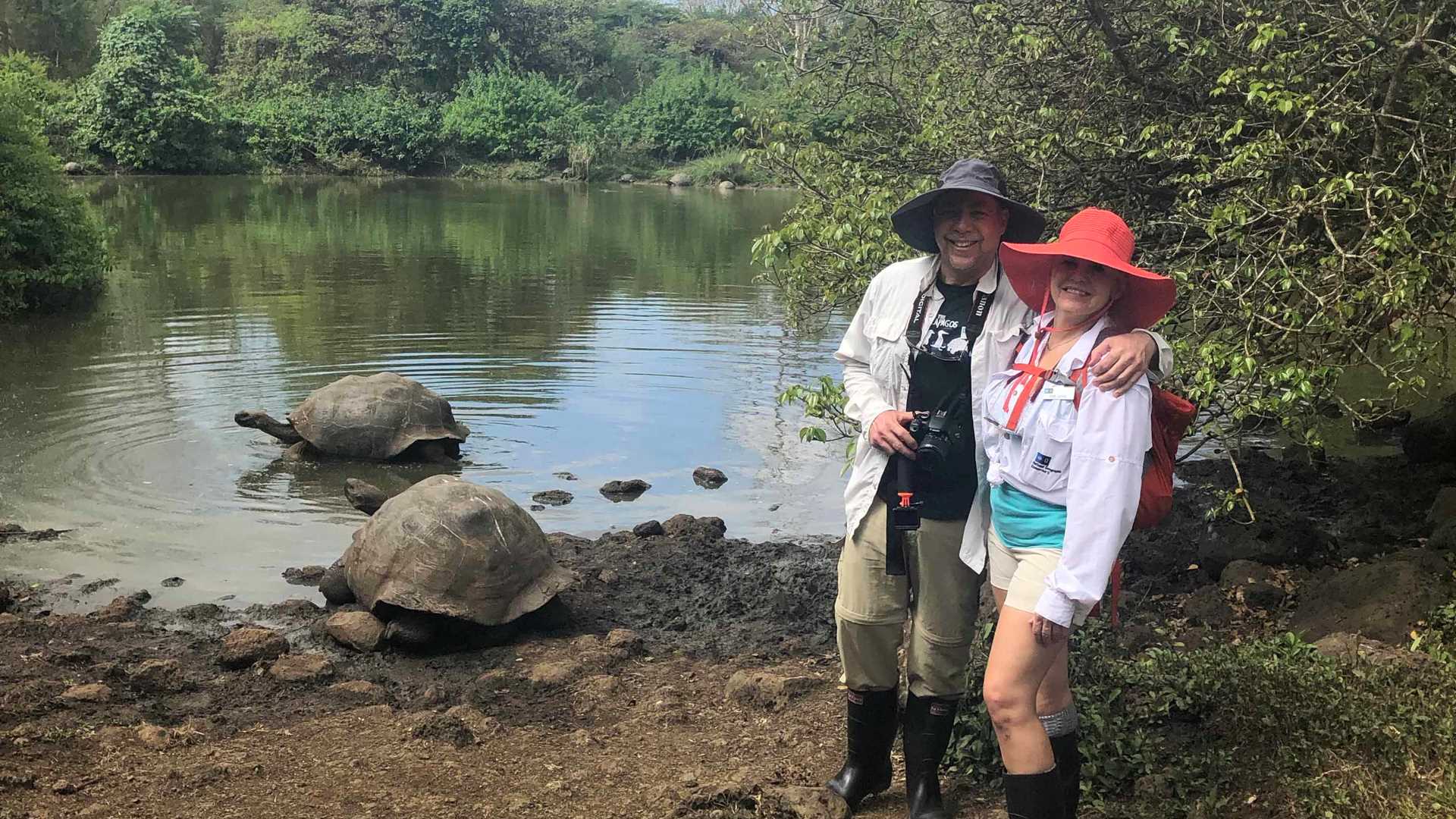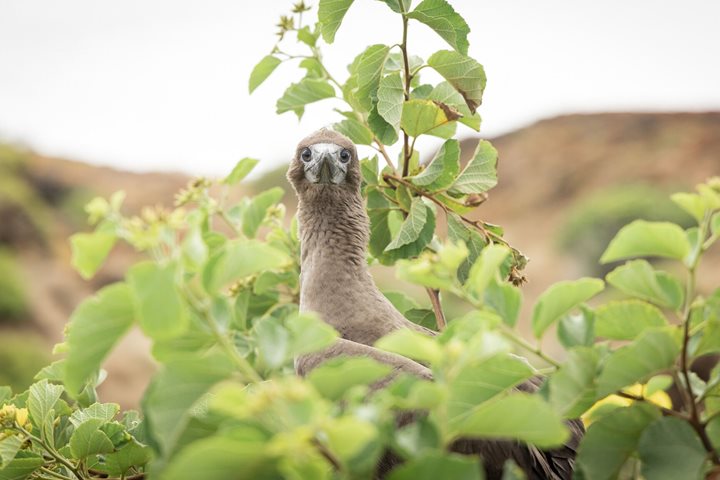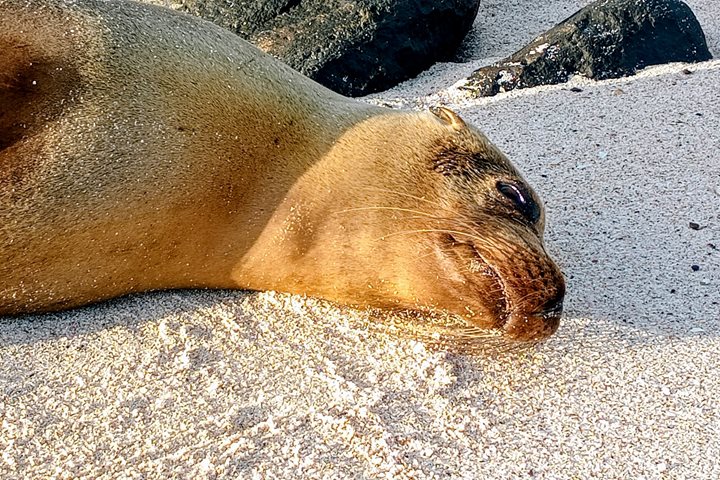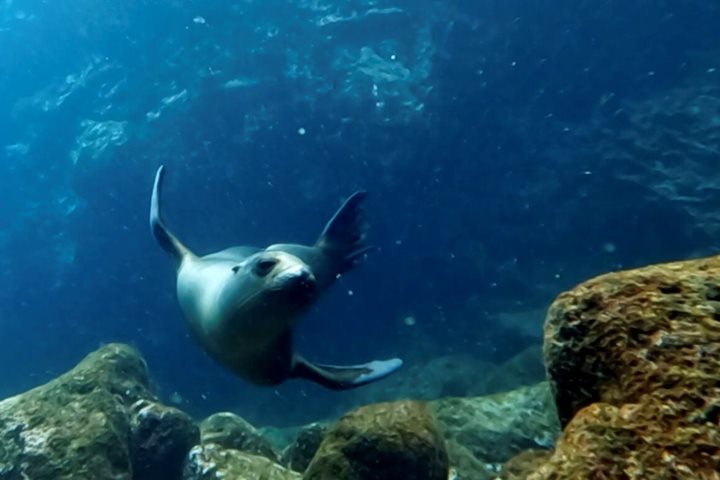We spent the day exploring Santa Cruz Island. Guests disembarked in the morning to visit a ranch in the highlands of Santa Cruz where we encountered the Galapagos giant tortoise. We were quite lucky on this day, as we observed many giant tortoises of varying ages. The freshwater pond where these giants tend to aggregate was teeming with life; we counted at least 25 tortoises there alone! Giant tortoises are considered bioengineers; by virtue of their natural history, they alter their environment. They graze upon their favorite plants and drop seeds across the landscape—these seeds are perfectly ready for germination, nestled in a little bundle of high nutrient fertilizer. The Santa Cruz giant tortoise exhibits a dome-shaped carapace, an advantageous adaptation for plowing through the dense vegetation of an island with significant precipitation.
We also spotted many Galapagos white-cheeked pintail ducks. Some guests observed the seldom-sighted large tree finch, a very special observation indeed. After a guided walk, guests were given time alone to roam the ranch, photographing and observing these iconic giants. We enjoyed a delicious lunch at the ranch and tasted some local spirits and coffee.
We spent the afternoon at Bachas Beach. The beach was named after a barge that wrecked on the shore during World War II when the United States established a military base on Baltra Island. The Galapagos archipelago has the highest number of nesting green sea turtles in the entire Eastern Tropical Pacific Seascape, some 4–5,000 individuals throughout the islands. Up to 50% of all beaches in the Galapagos are nesting sites for the green sea turtle. On Bachas Beach, guests observed sea turtle nests and tracks all along the beach. We visited a small lagoon where we encountered the American flamingo. The mitochondrial DNA of these individuals in the Galapagos has diverged from the populations found around the Caribbean. After our walk, guests strolled the beach on their own, enjoying the sunset and a refreshing swim in the ocean.







